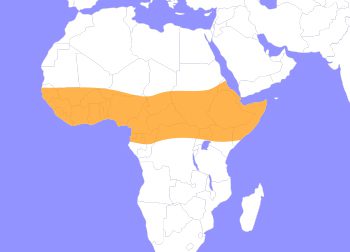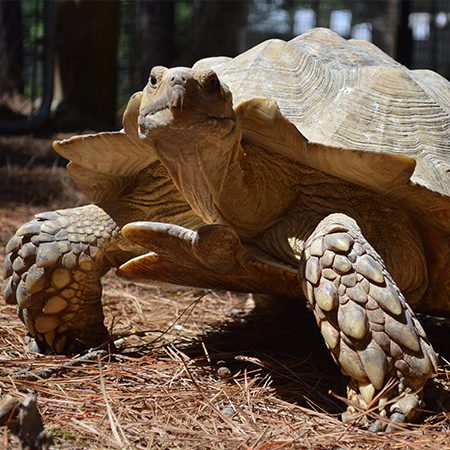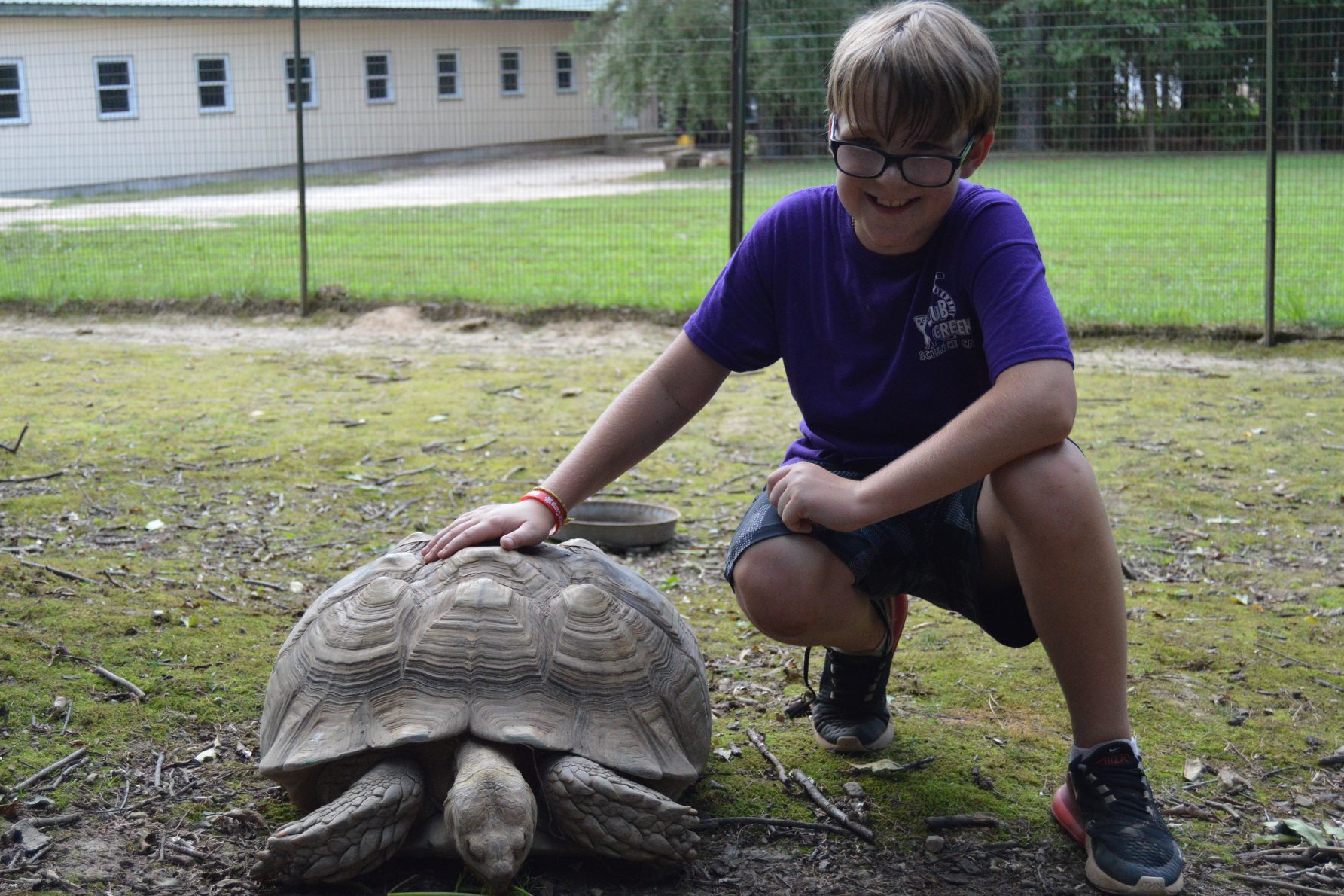African Spurred Tortoise
Centrochelys sulcata
Also known as the Sulcata Tortoise, this is the third largest tortoise in the world and largest mainland tortoise. The only tortoises that are larger are the Aldabra Giant Tortoise (1st) and the Galapagos Tortoise (2nd). The term “spurred” refers to the large, pointed scales found on their front legs. In the wild, they are found in a place called an ecotone, an area where one type of habitat transitions into another. In this case, they are found in what is called the Sahel, where the Sahara Desert turns into the African savannahs. Because of their desert habitat, these tortoises are yellowish-brown in color to blend in. Males and females are hard to tell apart outside of mating season, though males may be a bit larger. They are fairly long-lived animals, being able to live over 50 years in captivity. They are slow growers and can weigh 80-110 lbs and be 2-3 ft in length.
Like many other tortoises, Sulcatas differ from turtles by being land-dwelling animals (they cannot swim) and having domed shells with bumps on top. Turtles tend to have flat shells that allow them to be more streamlined and swim faster. However, similar to turtles, African Spurred tortoises are becoming very popular in the pet trade.

African Spurred Tortoises are native to Africa, ranging across the southern edge of the Sahara Desert.
HABITAT -They live in the desert and savannah regions of the Sahel.
DIET -They are herbivorous, mainly eating succulents.
FUN FACT -They are revered by some African cultures for being a connection to ancestors.
SOCIAL BEHAVIOR -Very docile to humans and can live with a few others if given enough room.
ACTIVITY -They are known to be crepuscular, being active most at dawn and dusk.
PREDATORS - Because of their hard shell and big size, humans are really the only predator.
SIZE -They can weigh between 80 and 110 lb, and their shell can be 2-3 ft long.
RELATIVES -The only of its genus that is living, Sulcatas are closest to all other tortoises.
CONSERVATION -They're listed as VU (Vulnerable) in the wild by the IUCN; though they have a large population in the pet trade.
Cub Creek Animal Care Information
Housing - All our tortoises have seasonal housing to accommodate their need for high temperatures. In the summer, they live in the Pentagon with our cavies and wallabies to enjoy the Missouri summer heat. They have a large area to explore (at their own pace), and are given a small pond to cool off in. When the temperatures start to drop, they are moved indoors to Lemur Landing and get to hang out with some of our lemurs, bettongs, and various birds. They love this enclosure for its many crevices to burrow under, just like what they would do in the wild!
Diet - Our tortoises are fed a mixture of fruits and vegetables, along with a calcium supplement to keep their shells strong and healthy. Their diet mainly consists of apples, sweet potato, and lettuce. Occasionally they’ll get treated with various other fruits and vegetables; a favorite of theirs is eggplant!
Enrichment - Our slow-moving tortoises definitely aren’t going to play chase, and generally arent animals known for their high enrichment needs, so to keep them entertained we give them various places to hide or climb over. During the summer, campers will give them special treats to mix up their diets or put their food in novel locations, so the tortoises have to find it.


